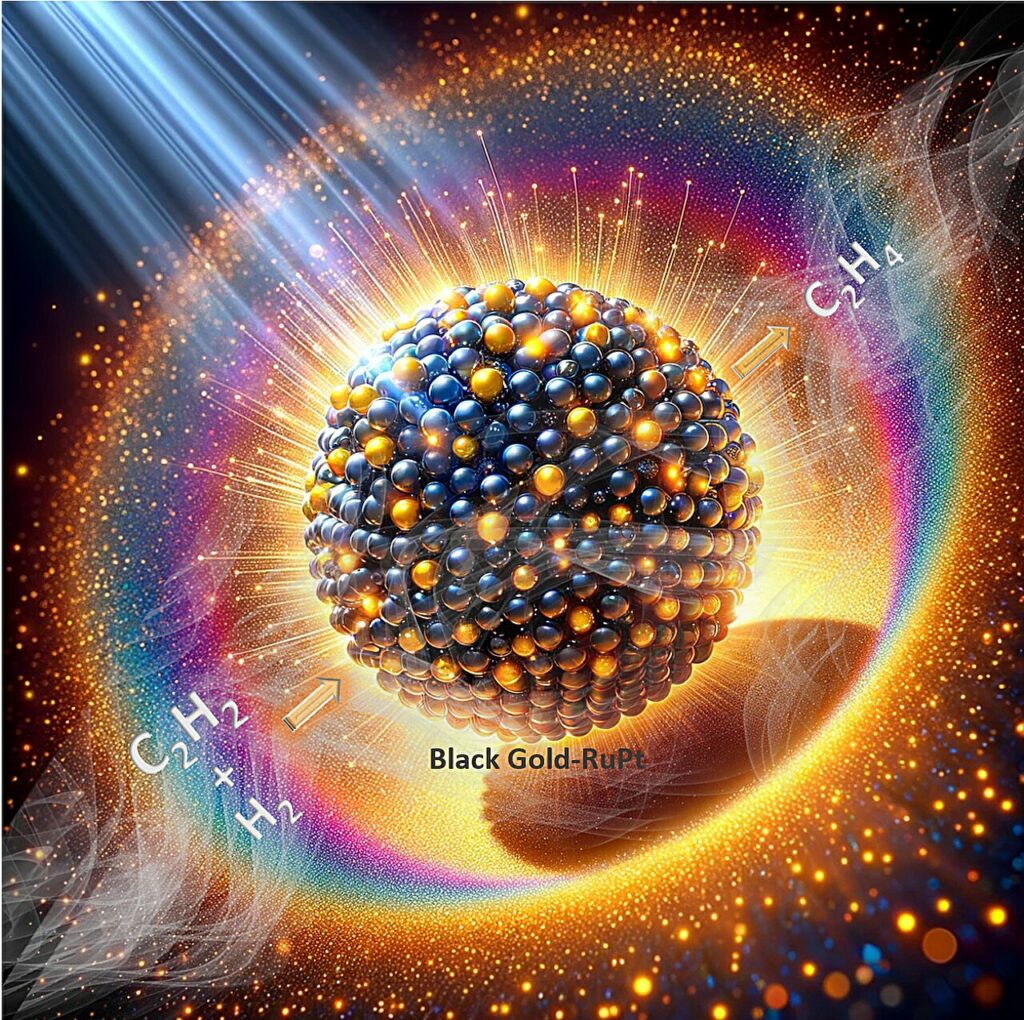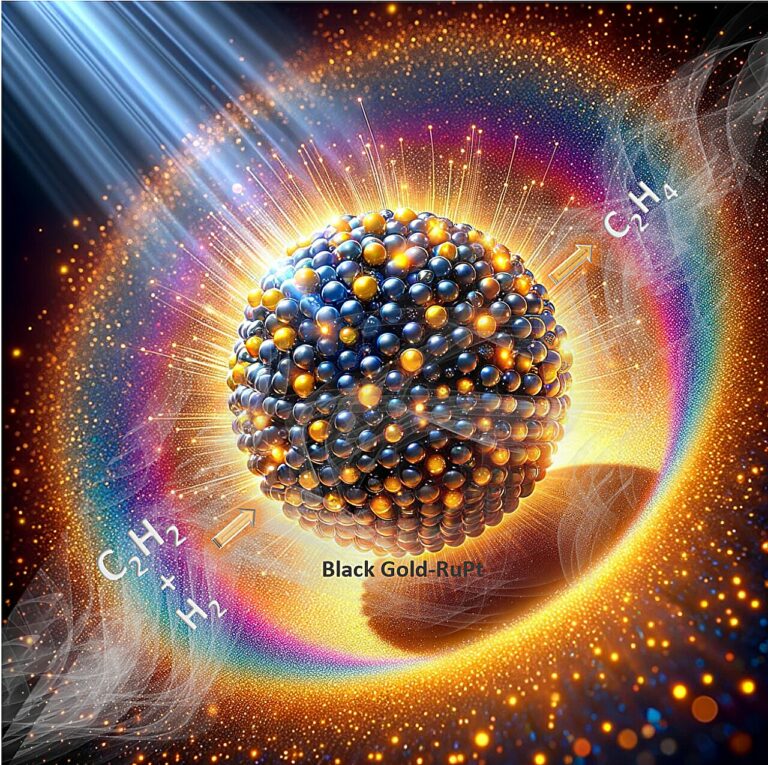Revitalizing Plasmonic Catalysis: The Renaissance of Black Gold and Solar Light
Prof. Polshettiwar’s team at Tata Institute of Fundamental Research (TIFR), Mumbai, has successfully developed a groundbreaking “plasmonic reduction catalyst stable in air.” This catalyst defies the common instability issues faced by reduction catalysts when exposed to air. It combines platinum-doped ruthenium clusters with “plasmonic black gold,” a material that efficiently harnesses visible light and creates numerous hot spots through plasmonic coupling. This unique characteristic significantly enhances the catalyst’s performance.
What truly sets this catalyst apart is its exceptional performance in the semi-hydrogenation of acetylene, a crucial industrial process. By utilizing only visible light illumination, without any external heating, and in the presence of excess ethene, the catalyst achieved an impressive ethene production rate of 320 mmol g−1 h−1 with approximately 90% selectivity. This level of efficiency surpasses all known plasmonic and traditional thermal catalysts.

Interestingly, this catalyst demonstrates its optimal performance when air is introduced alongside the reactants. This specific requirement leads to an unprecedented stability that lasts for a minimum of 100 hours. The researchers attribute this stability to the simultaneous plasmon-mediated reduction and oxidation processes occurring at the active sites during the reaction.
To further enhance our understanding of this catalyst, finite-difference time-domain (FDTD) simulations were conducted. These simulations revealed a five-fold increase in the electric field compared to pristine DPC (doped polycyclic aromatic hydrocarbon). This field enhancement, resulting from the near-field coupling between the RuPt nanoparticles and DPC, plays a vital role in activating chemical bonds. The catalyst’s effectiveness is also evident in its kinetic isotope effect (KIE), which is more pronounced under light conditions compared to darkness, regardless of temperature.
This research signifies the notable importance of non-thermal effects in addition to the photothermal activation of the reactants. Detailed in-situ DRIFTS and DFT investigations have provided valuable insights into the reaction mechanism occurring on the oxide surface, particularly emphasizing the role of intermediates in determining selectivity. The partially oxidized RuPt catalyst surface generates di-σ-bonded acetylene, which subsequently undergoes multiple steps to yield ethene.
This study represents the initial documentation of a highly effective catalyst that is air-stabilized and plasmonically activated for acetylene semi-hydrogenation. It holds potential for various other reduction reactions and contributes significantly to the comprehension of plasmonic catalysis. Moreover, it paves the way for the development of sustainable and energy-efficient catalytic systems.
This article is republished from PhysORG under a Creative Commons license. Read the original article.
Do not forget to share your opinion with us to provide you with the best posts !




0 Comments